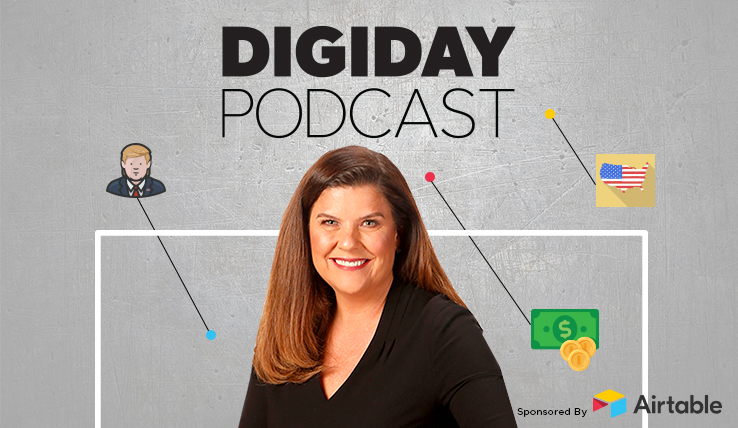USA Today’s Nicole Carroll: ‘We can’t be all things to all people’

Subscribe: iTunes | Google Play | Stitcher | Anchor
USA Today is for “the entire United States,” but that does not mean it can be “all things to all people,” said Nicole Carroll, the publisher’s new editor-in-chief, on this week’s Digiday Podcast.
As local news publishers struggle to establish sustainable business models, Carroll is finding solutions in audience, editorial focus and leveraging synergy between USA Today’s local and national newsrooms.
“By outsourcing of the non-local functions like design or technology pieces, we can focus our resources on local reporting,” Carroll said. “You do see healthy newsrooms in our properties because our scale has allowed us to take costs off the local market and make economies of scale. We’ve refocused on what we’re going to cover. There’s some things we’re not going to cover for our audience.”
Carroll discusses USA Today’s editorial approach, pushing for innovation and more in the episode. Edited highlights appear below:
Establishing coverage priorities
“We’re data-informed and not data-controlled. We know what’s resonating. We talked with the sports editor and said we will not cover community college sports. It’s important to Arizona people, but it’s not one of our priorities. We can’t be all things to all people. We figure out who is our audience and what do they want. We don’t need reporters everywhere. We already have [local properties]. We’re able to share some of that national coverage, and our local properties can do deep coverage.”
Innovation is in USA Today’s DNA
“I want to increase our investigative and enterprise reporting. We need to do that in a digital way. Donald Trump started his campaign in Phoenix and came back about six times. At the beginning, it was all about ‘build the wall.’ I felt the responsibility to explain what exactly that would mean — the cost, who it would help, who it would hurt, what it would take. So we flew a helicopter from the Gulf of Mexico to San Diego and mapped every piece of the wall. We did an interactive map, and you can see exactly what is there right now. And we sent reporters to talk about the impact of the wall on the people in that part of the country.”
Nonpartisan journalism retains readers
“We are for Americans who want to get clear, unbiased news through podcasts, print, VR and every way possible. We tell the news, whether it pits the administration in a good or bad light. The minute you take a partisan view, you cut off 50 percent of your audience. They’re not going to listen to you — they’ll cut you off. If you can take a truly educational stance, you have a chance of educating people. I did a podcast with reporters so [our listeners] know what it was like, and for the sake of transparency. Trust is important to me. That is our differentiator from the aggregators and people who do the volume game.”
Exploring consumer revenue
“Our local properties have subscriptions and memberships. They’re doing well. We’re also looking for all kinds of consumer revenue. We’re in events. We have food and wine festivals, high school sports awards and storytelling events across the country. Then, we’re looking at niche products that can bring in subscription revenue. People understand that truth and trust comes at a cost, and we’re seeing growth.”
Assessing new products
“We need to put products out there. We need to give people information that they can’t find anywhere else. Video is important, and we’ve been successful. We’re growing the numbers month over month. We put ‘The Wall’ on Facebook Watch. You have to incubate things. What never existed can’t be measured. Our VR app has 70,000 downloads — we’re thrilled.”
More in Media

With Firefly Image 3, Adobe aims to integrate more AI tools for various apps
New tools let people make images in seconds, create image backgrounds, replacing parts of an image and use reference images to create with AI.

Publishers revamp their newsletter offerings to engage audiences amid threat of AI and declining referral traffic
Publishers like Axios, Eater, the Guardian, theSkimm and Snopes are either growing or revamping their newsletter offerings to engage audiences as a wave of generative AI advancements increases the need for original content and referral traffic declines push publishers to find alternative ways to reach readers.

The Guardian US is starting its pursuit of political ad dollars
The Guardian US is entering the race for political ad dollars.








